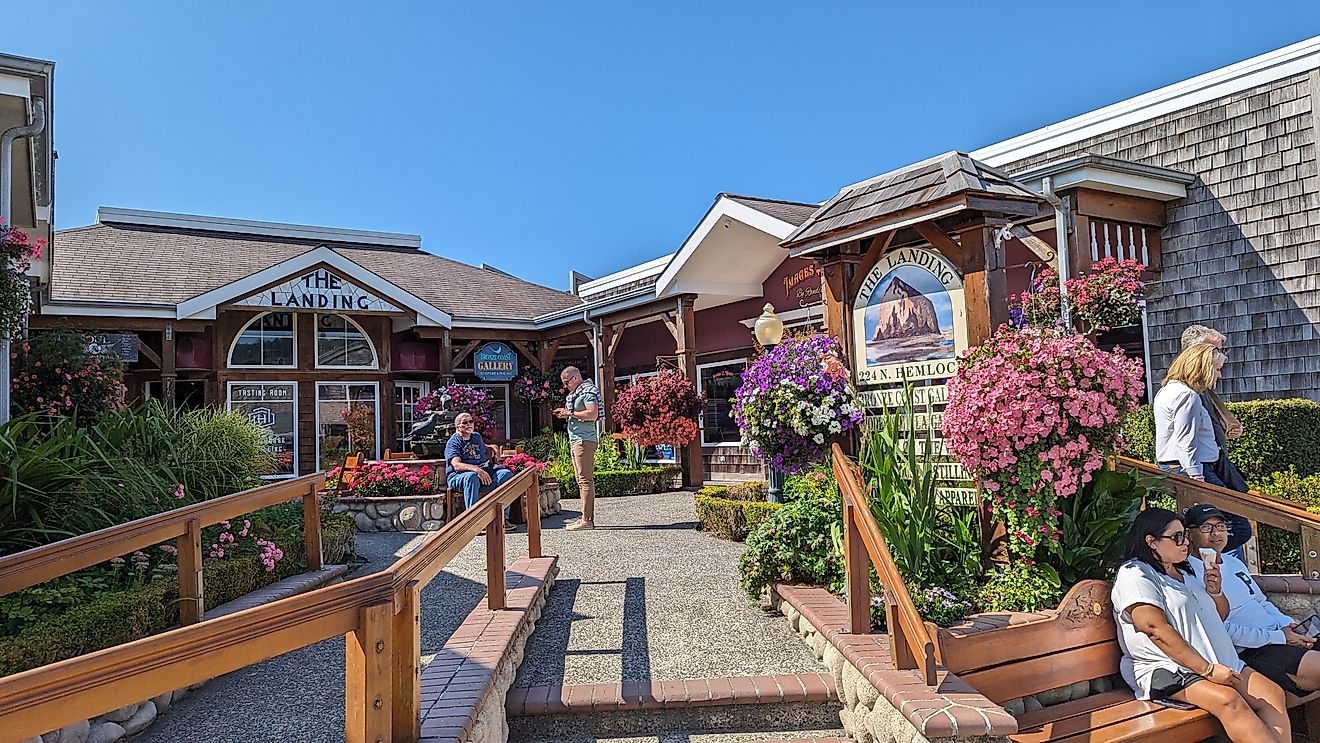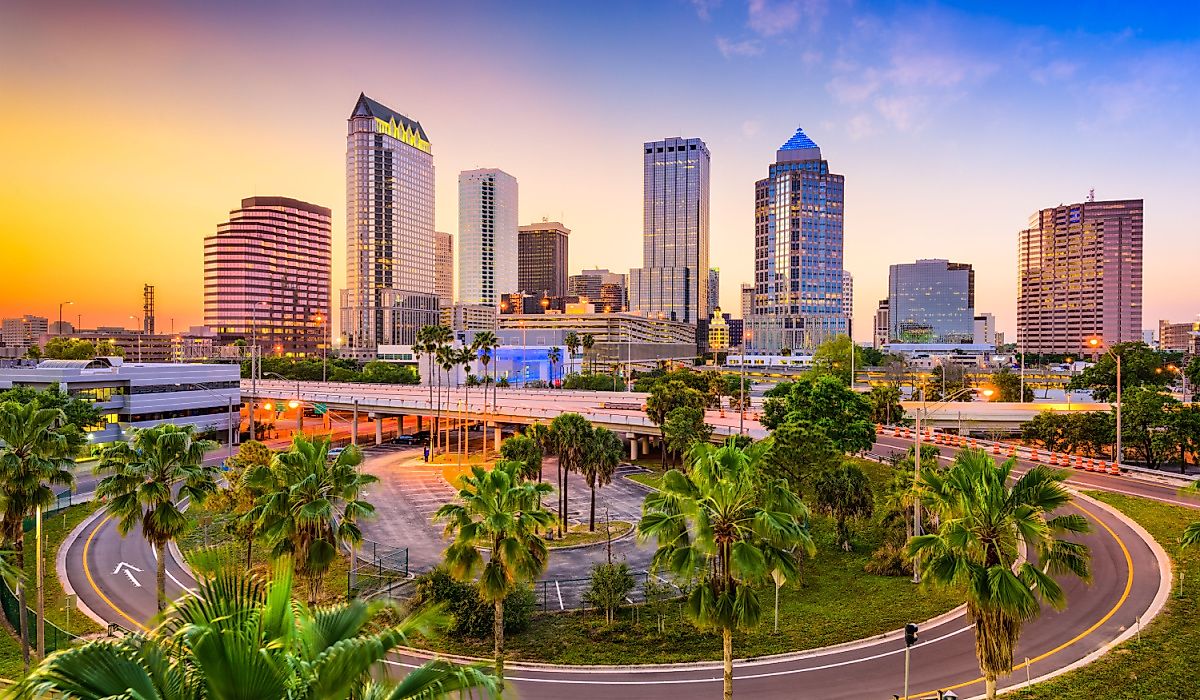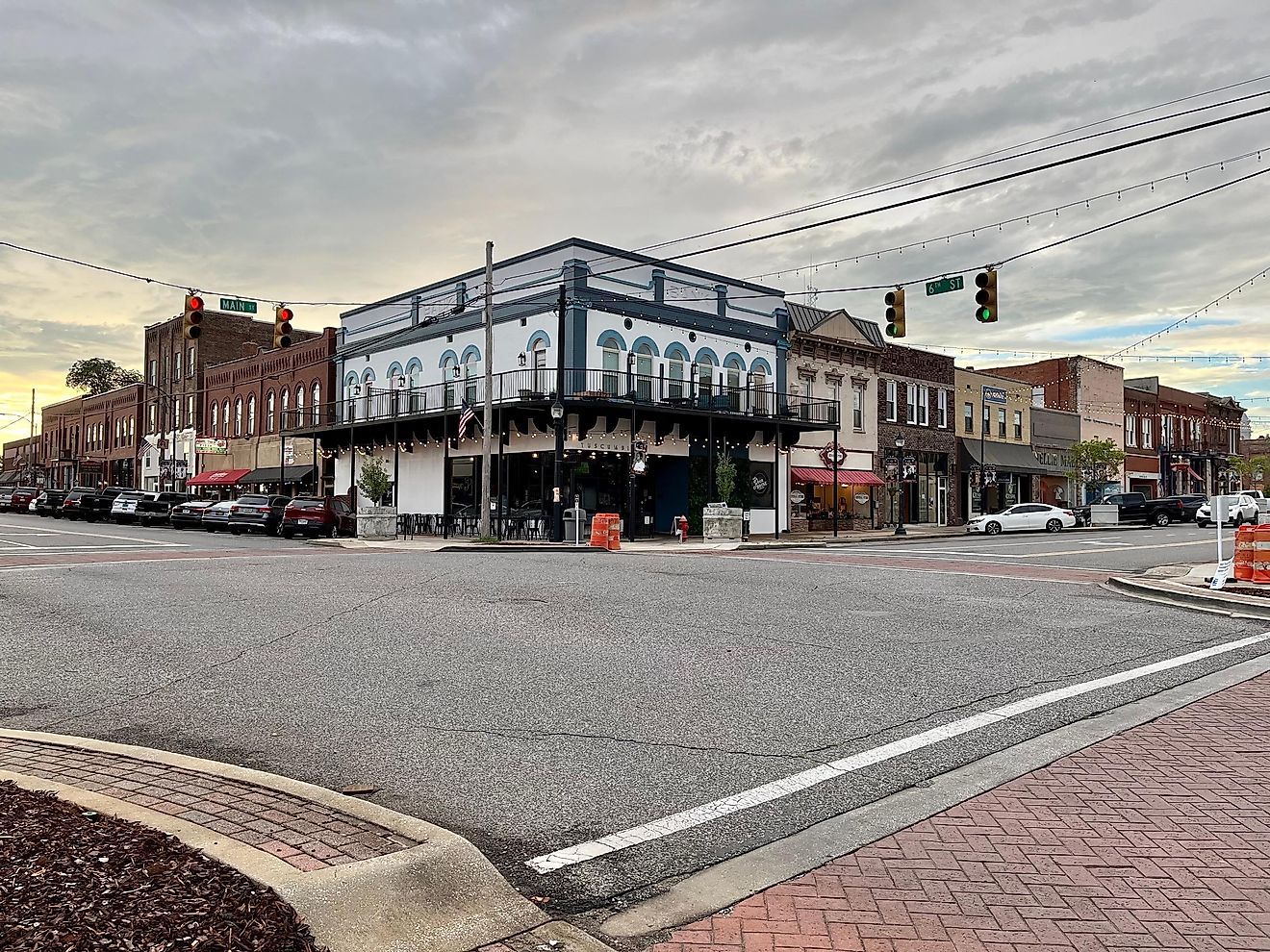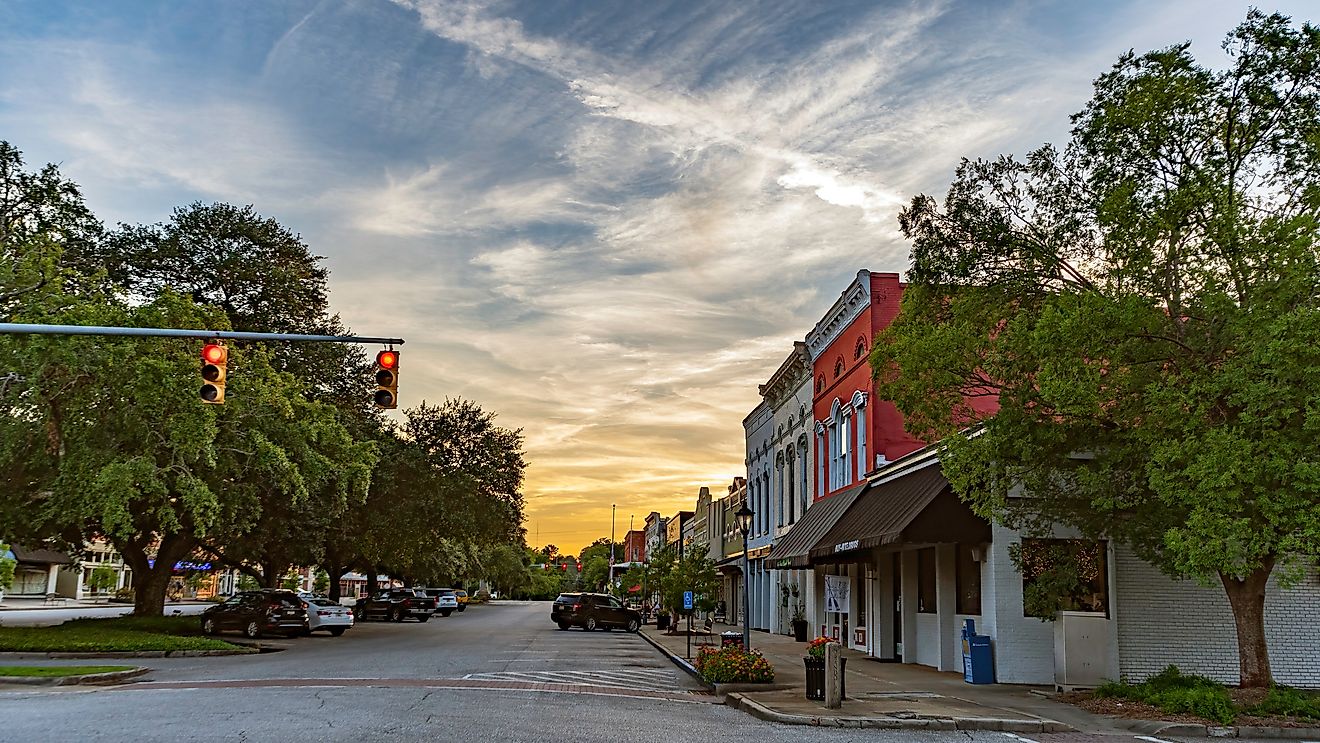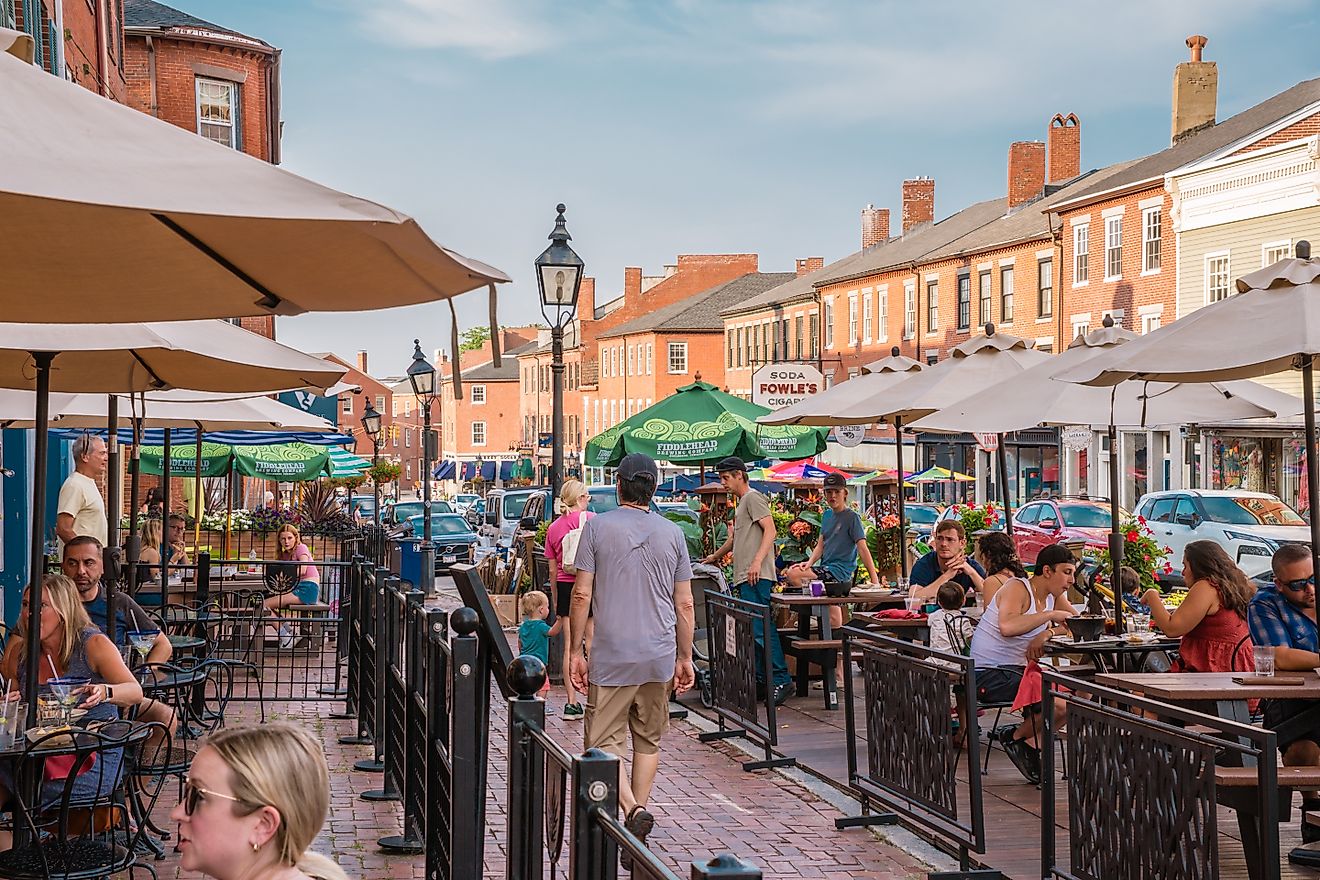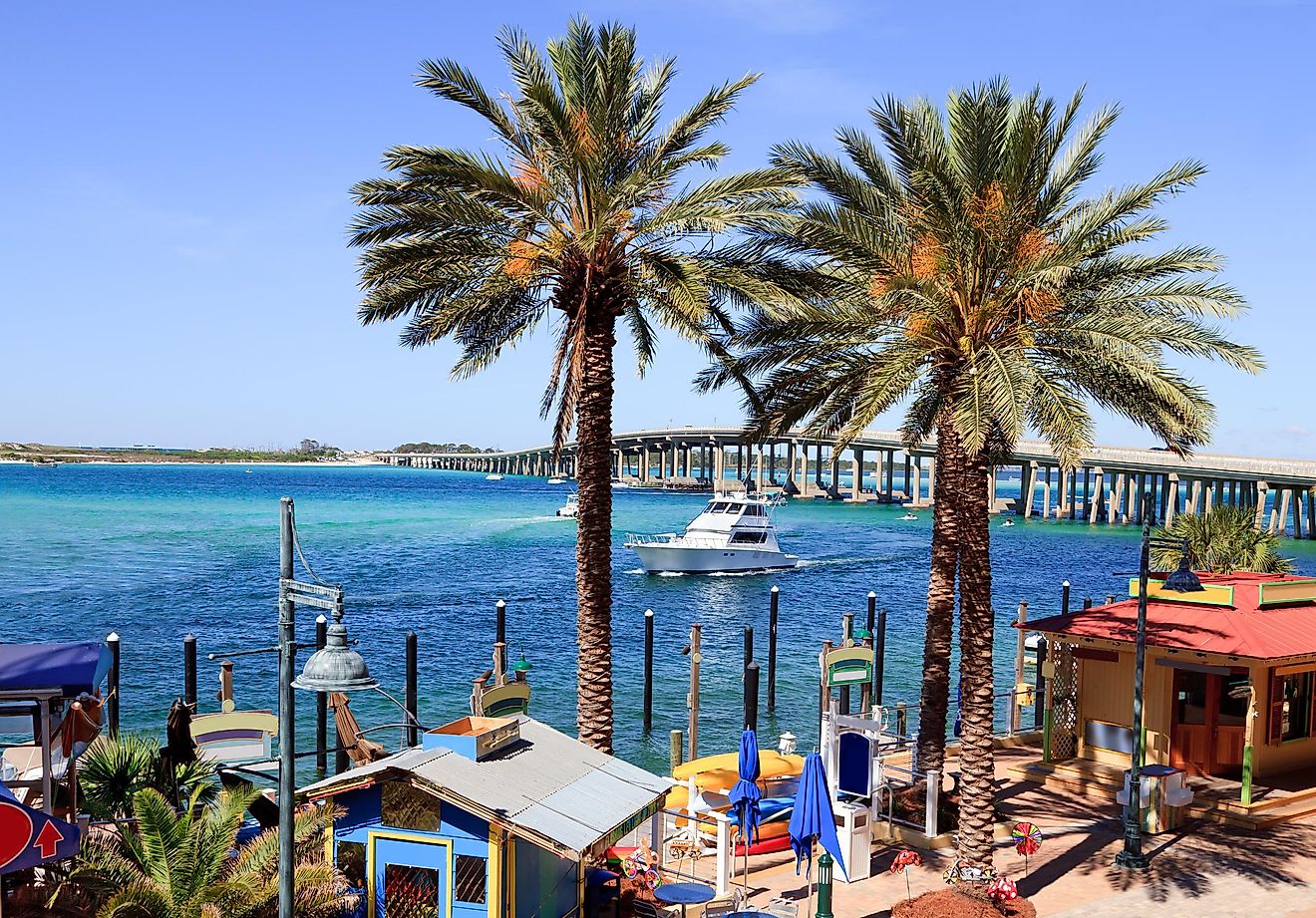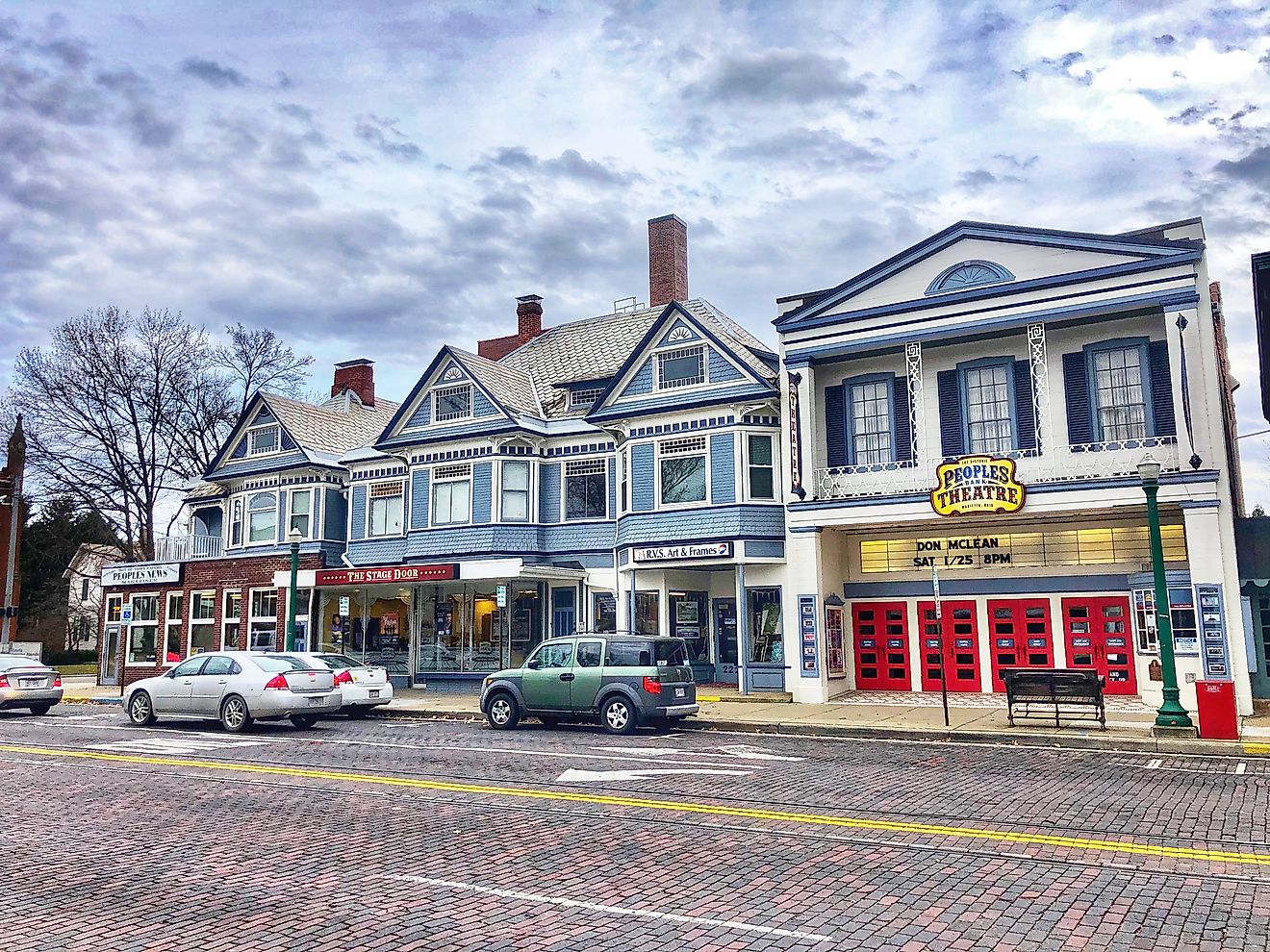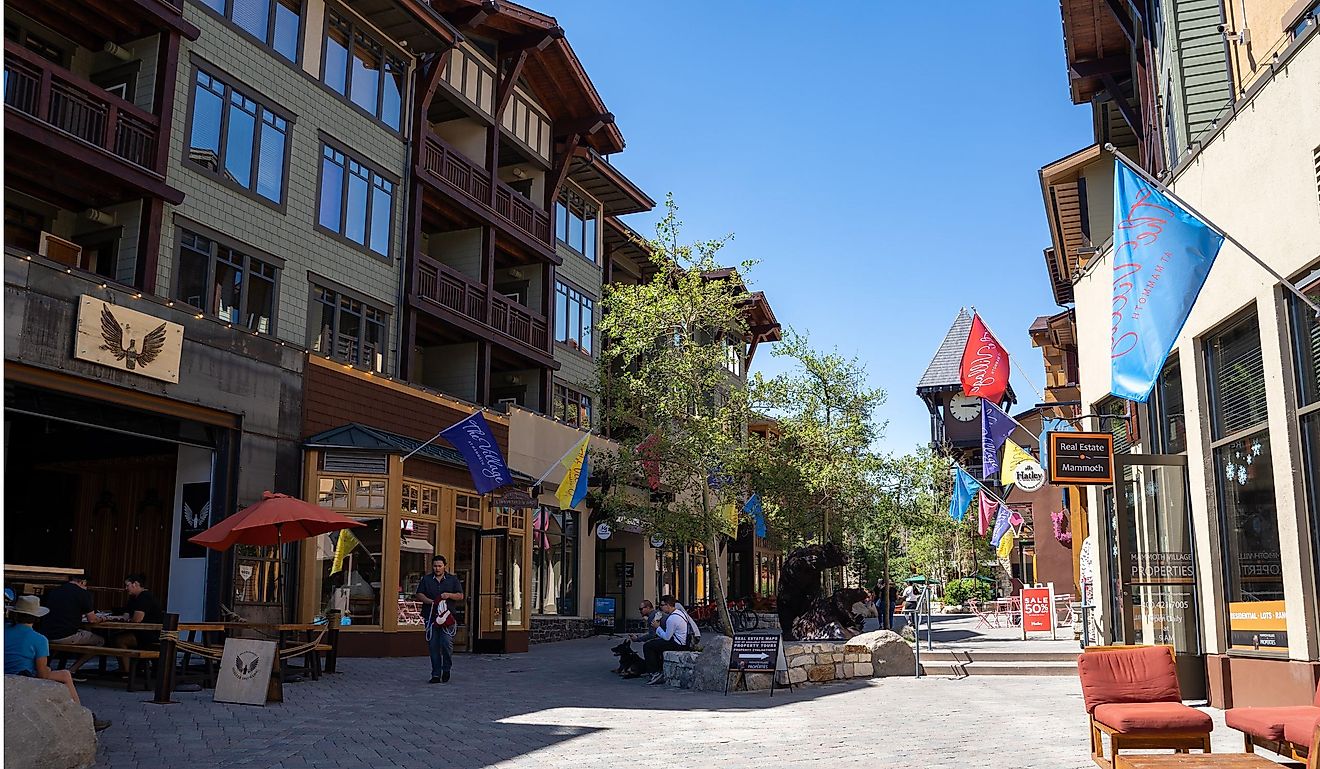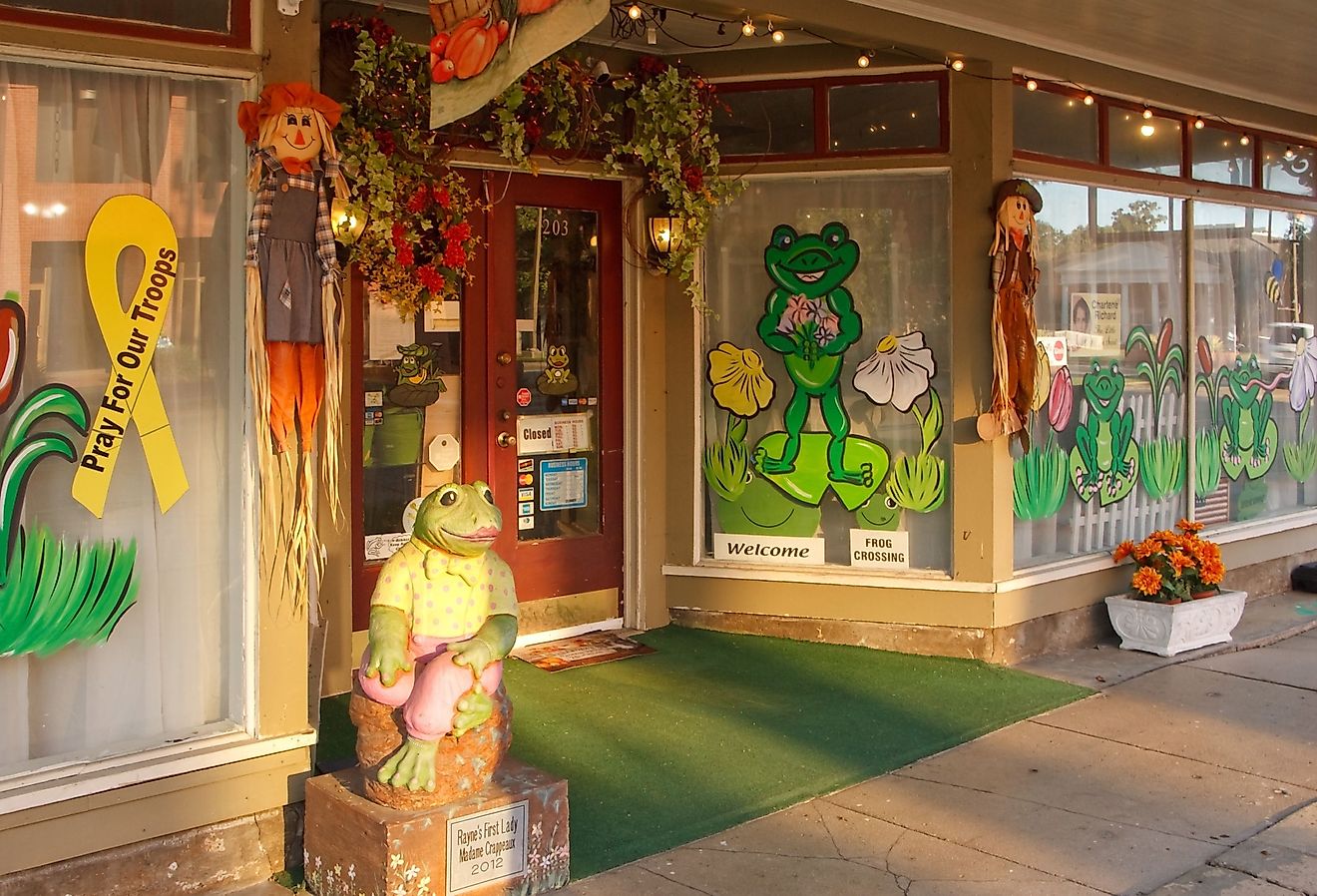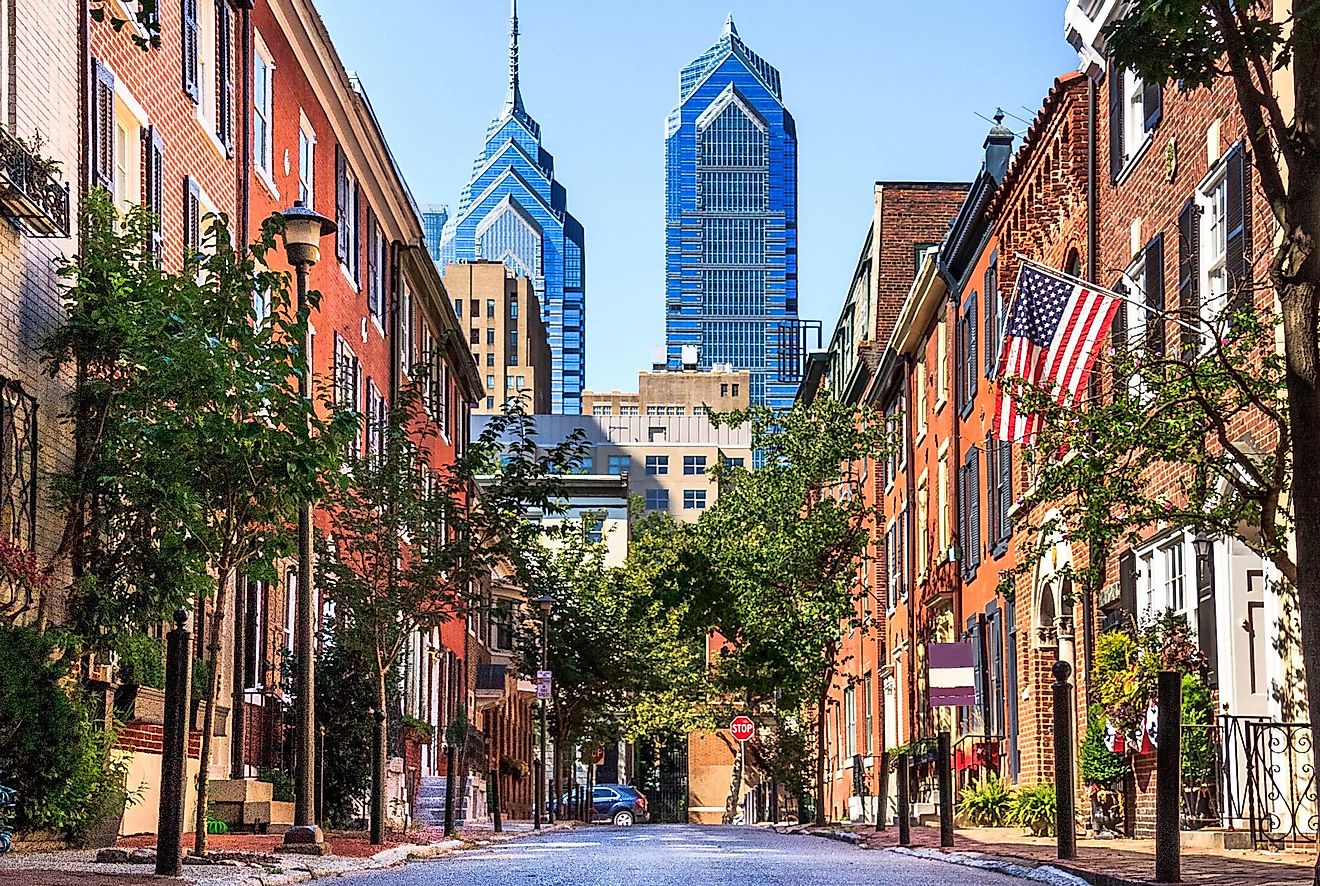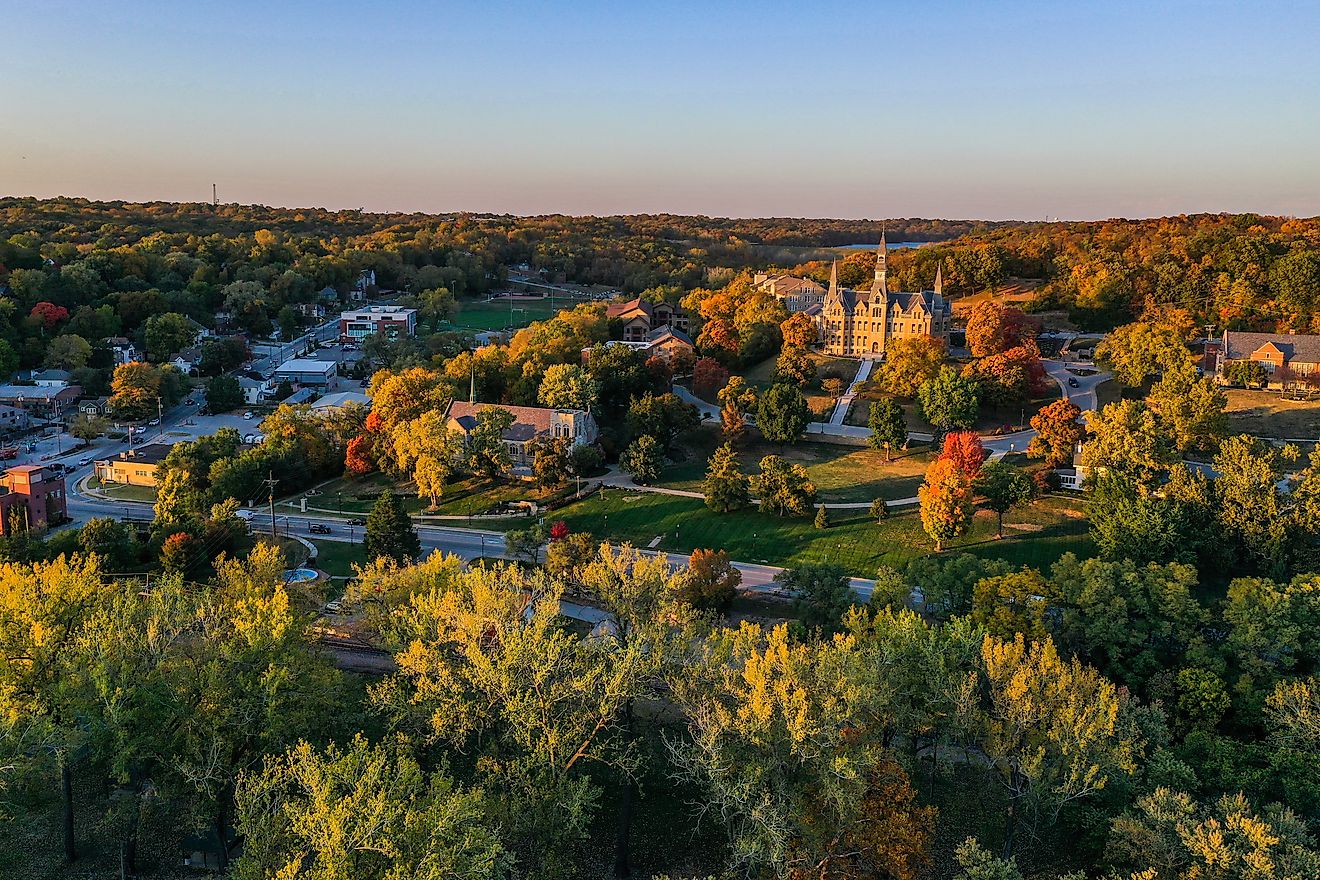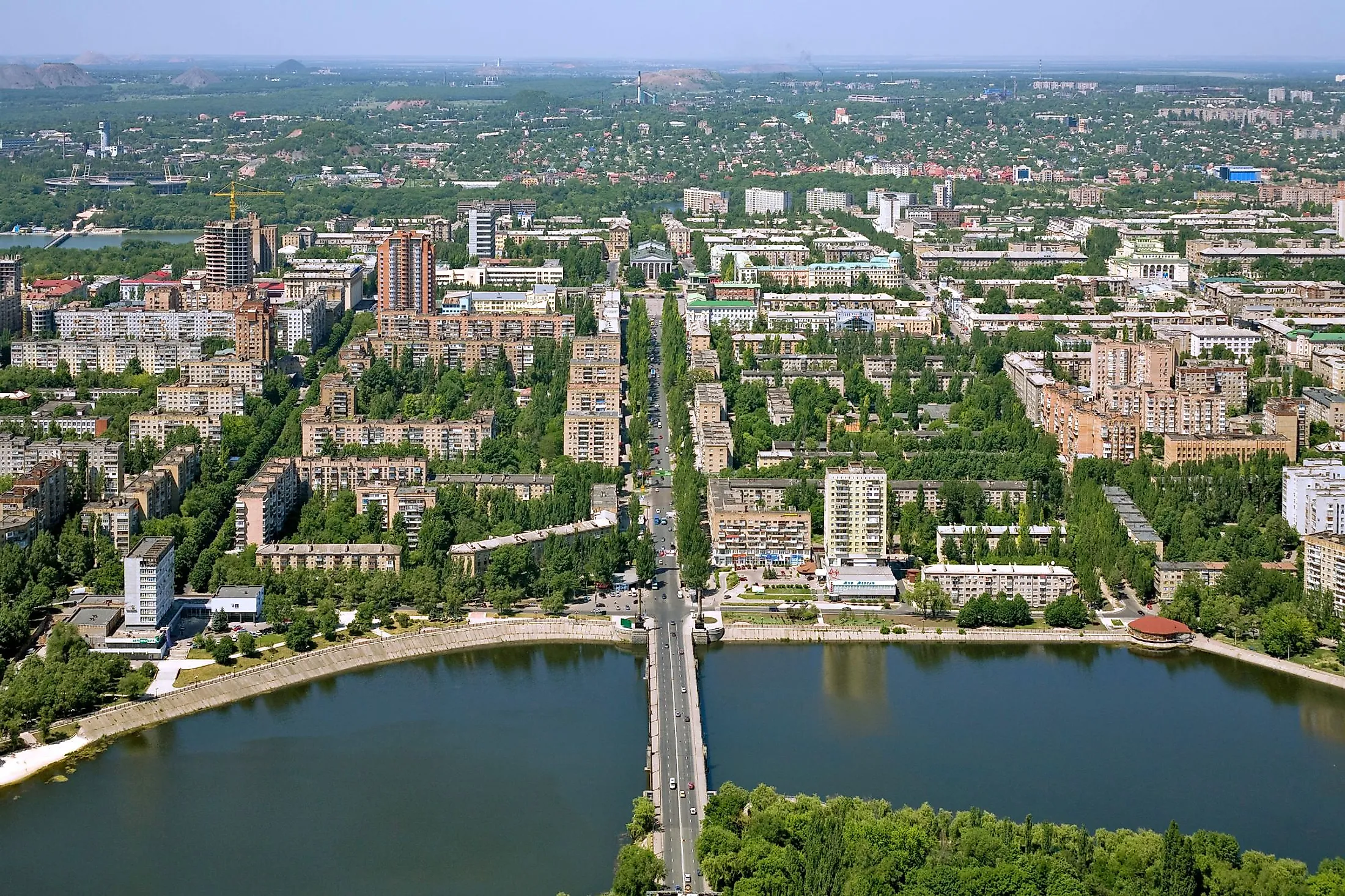
Donetsk, Ukraine
Donetsk is Ukraine's largest coal-mining and urban metallurgist cluster of 1,250 sq. km in breadth, set in a steppe region on the upper reaches of the Kalmiius River. As the fifth-largest city by size and second-largest by population with some 1.5 million people, surpassing the second largest, size-wise, city of Kharkiv, it was also the capital of Donetsk. Since the take-over by the self-proclaimed Donetsk People’s Republic in April 2014, Kramatorsk became the oblast's administrative center, while Donetsk plays a prominent role in the Donets Basin (Donbas) industrial region.
Brief History Of Donetsk
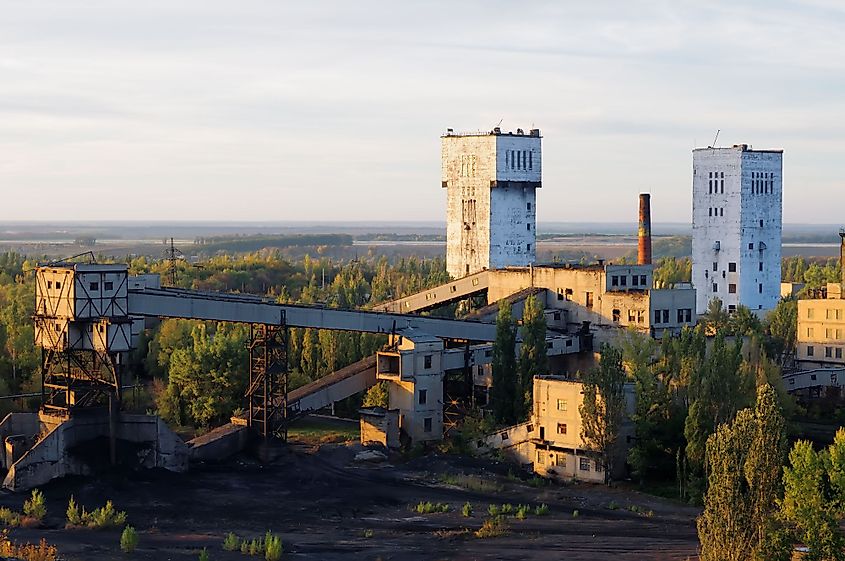
The settlement established in 1869 for the workers of the New Russia Company of Anthracite, Iron, and Rail Production (Donetsk Metallurgical Plant), was set 5 km south of the village of Oleksandrivka with its first mechanized coal mine in the Russian Empire from 1841. Originally founded as an ironworks company in 1872 by a Welshman, John Hughes, the town of Yuzivka, named in his honor, produced iron rails for Russia's growing rail network. By 1876, thanks to the readily available large anthracite-coal deposits, water supply, and the extension from Kostiantynivka in 1872, and then the Donbas–Kryvyi Rih (1883) railway line, its metallurgical plant was the largest in the Russian Empire. The French- and German-owned machine-building plant of 1889, known today as the Donetsk Machine-Building Plant, produced equipment for the nine operating mines in 1899 owned by the English, French, Russian, and Ukrainian industrialists.
The population increased from 5,500 in 1884 to 32,000 in 1897 and 70,000 in 1913, particularly in migrant Russian workers and their families. The area's Ukrainian population was unwilling to transform their agriculturally-centered lives into the "grimy urban, industrial lifestyle." Known as Staline or Stalino between 1924 and 1961, the postwar modernization and increased industry led to economic growth in the city-centered, around the Donetsk Metallurgical Plant. Following the collapse of the Soviet Union, its status as a significant industrial propellant of the independent nation's economy has fallen upon the turmoil of 2014 events that severed primary railway connections. There was an active waterfront to the north and west of the city, while its modern airport was destroyed in a fierce 242-day battle lasting into 2015 for its control.
The Donetsk People’s Republic
Donetsk was the political stronghold of pro-Russian politician Viktor Yanukovych who was elected President in 2010 and removed from power in February 2014 following the Maidan protests. In April, Russian-backed militants and Russian troops in sans insignia uniforms seized control of a large territory in the Donets Basin. They held their own referendum on the republic's independence on May 11, 2014, which was not recognized by Ukraine as legitimate, while the European Union and the United States consider it illegal. Still, the self-proclaimed Donetsk People’s Republic declared the city of Donetsk as its capital and withheld the presidential election that took place in the rest of the country. Due to the continuous fighting in the region, more than 14,000 lives were lost by the beginning of 2022.
Culture Of Donetsk
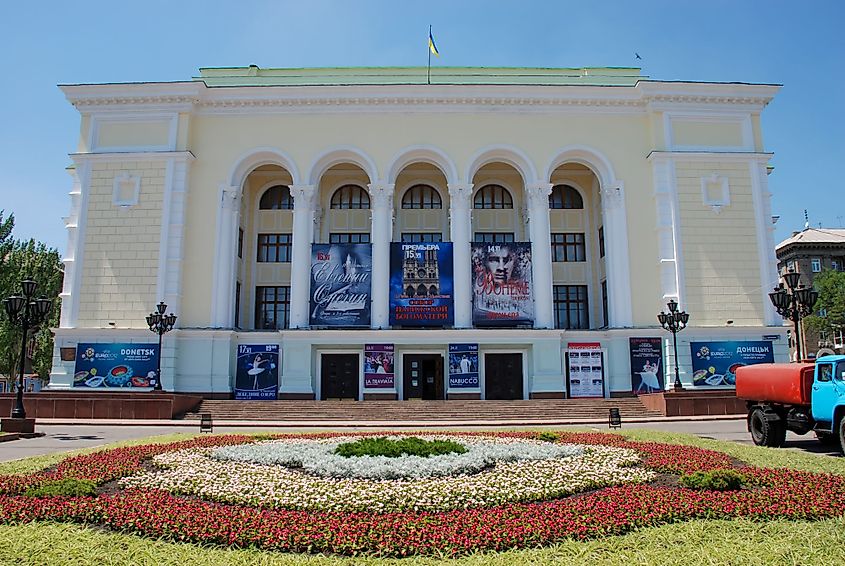
Before 2014, Donetsk was one of the country's most significant learning and cultural hubs with 30 research and development institutions. Following the turmoil, their pro-Ukraine personnel quickly gathered belongings and found alternate workplaces to the west. The vast National Academy of Sciences of Ukraine moved four of its Institutes into Kyiv, with only the Institute of Applied Mathematics and Mechanic remaining in the oblast's Ukraine-controlled Sloviansk. Similarly, many of the nineteen higher learning institutions that were in Donetsk in 2011 moved to various cities, including Vinnytsia, Pokrovsk, Kramatorsk, Kharkiv, Kryvyi Rih, and Mariupol.
The three theatres in the city are the Donetsk Opera and Ballet Theater (1932), the Donetsk Ukrainian Music and Drama Theater (1927), and the Donetsk Puppet Theater (1925). There are also the Donetsk Philharmonic Orchestra (1933), the Donetsk Circus, two-state museums being on oblast regional studies (1924), and on city art and history, along with many libraries and two planetariums. The Donbas publishing house (1964), several oblast newspapers, branches of the Union of Journalists of Ukraine and the Union of Artists of Ukraine, a branch of the Ukrainian Theatrical Society, and a branch of the National All-Ukrainian Musical Association were active until 2014, while the branch of the Writers' Union of Ukraine switched to the Russian bimonthly "Literaturnyi Donbas."
Donetsk was also a major national sports center with a highly developed infrastructure that hosted USSR-wide and international championships in boxing, mixed martial arts, karate, tennis, equestrian arts, gymnastics, and track, and field sports. Famed for its football (soccer), the city had three stadiums, Shakhtar, Metalurh, and Olimpik, named after their teams. Upon its two premium teams, the Shakhtar and the Olimpik moved elsewhere in Ukraine; the stagnant stadiums are barely used today.
Infrastructure
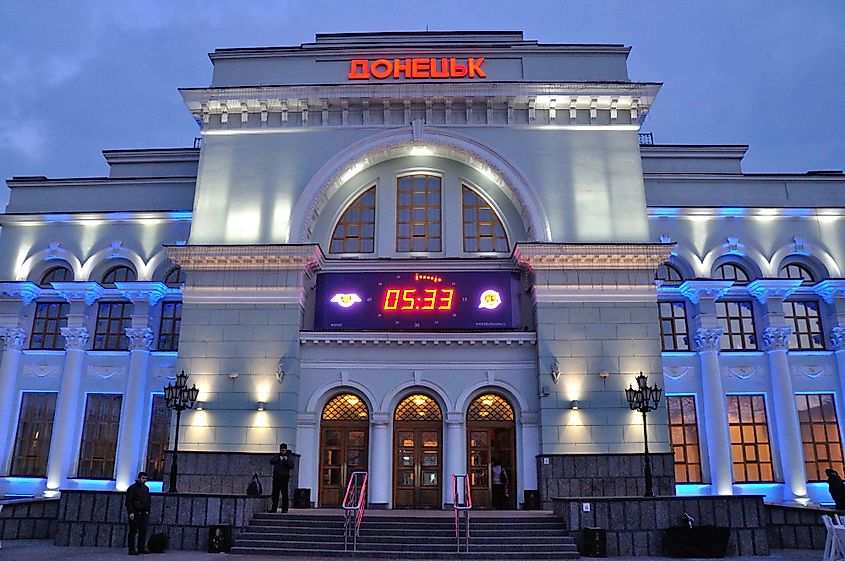
Reconstructed after World War II in a proletarian style with notable grand buildings, wide boulevards, and large parks with Soviet monuments, the Greater Donetsk appears from the air as a broad-based 50 by 35 km pyramid covering 571 sq. km in area. The outskirts of the central city containing parks and built-up areas, extend for 33 km east to west and about 20 km north to south, for the additional 400 sq. km limits of the city, that itself is divided into nine raions. The main broad boulevards, the Illich Prospect, the Shevchenko Boulevard, and the Peace Prospect cross the city's heart, while its principal thoroughfare contains popular shops, hotels, and administrative buildings in a stretch from the railway station to the steelworks.
The city's 11 central stations that make for the densest railway network in Ukraine, along with the intercity bus service emanating from the two terminals, have been limited since the 2014 hostilities. The suburbs and the adjoining cities to the east are still linked to Donetsk by trains. The inner-city transport includes trolleys (1927), trolleybus (1939), and bus, with the building of the Donetsk Metro planned since 1976, and only started in 1993, lapsed, renewed in 2012, and abandoned in 2013 due to the lack of finances.
City Plan Of Donetsk
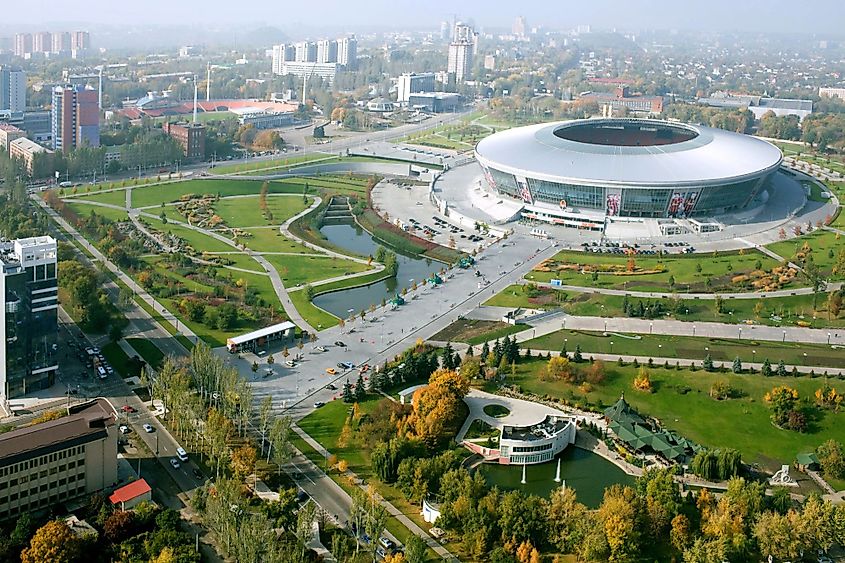
The first city plan for Donetsk was designed by an Odesa-born architect Petro Holovchenko in 1932 and re-worked in 1937 to keep up with the expansion and to harmoniously build around the industrial sites, slag heaps, and 100-m high cone-shaped piles of mine tailings. Developed in patches to avoid the mining areas subject to subsidence, resulted in densely-packed, residential, and factory districts, along with extensive open spaces in the city's outer limits. Kalmus Reservoir is east of the city center, and City Reservoir is west of it, with the through-running 8-km long Artem Street contains the main administrative, cultural, and historic buildings, the Donetsk Metallurgical Plant, the Voroshilov Raion, the Kyiv Raion, and the central Donetsk passenger railway station.
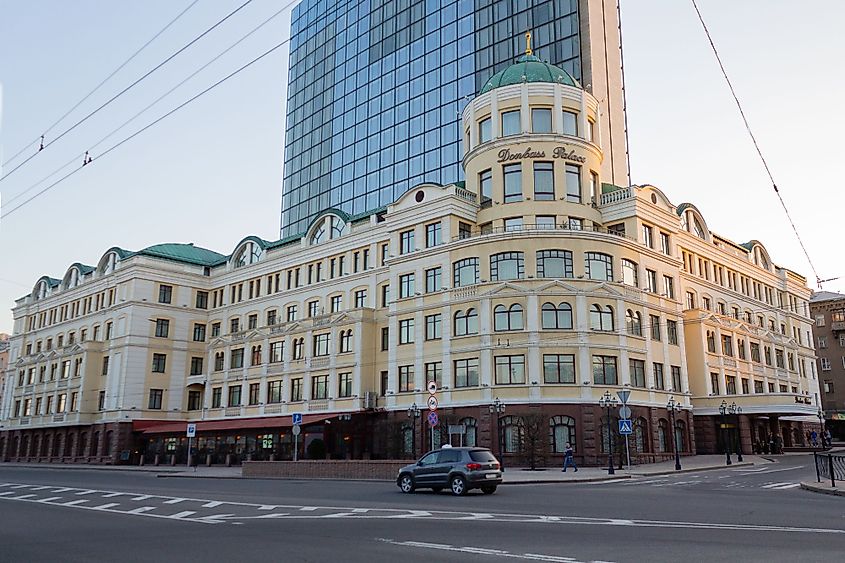
The DPR Administration, the Donetsk City Hall, the Donetsk National Technical University, the Donetsk State Academic Opera and Ballet Theatre (1941), the National Ukrainian Musical and Drama Theater, the Donetsk Oblast Philharmonic Hall, the Olympic Stadium, the Cathedral of Transfiguration of Jesus, the historic Great Britain Hotel, the newer Central Hotel, and the 5-star Donbas Palace Hotel can all be found on Artem Street. The broad Pushkin Boulevard and the University Street with the Donetsk National University and the unique Forged Figures Park run parallel to the street on the west. On the east side, there is the Peace Prospect, the Cheliuskintsiv Street with the central shopping mall, the Olympic Stadium, and the ExpoDonbas exhibition center that serves as a Russian military base at present.
Attractions In Donetsk
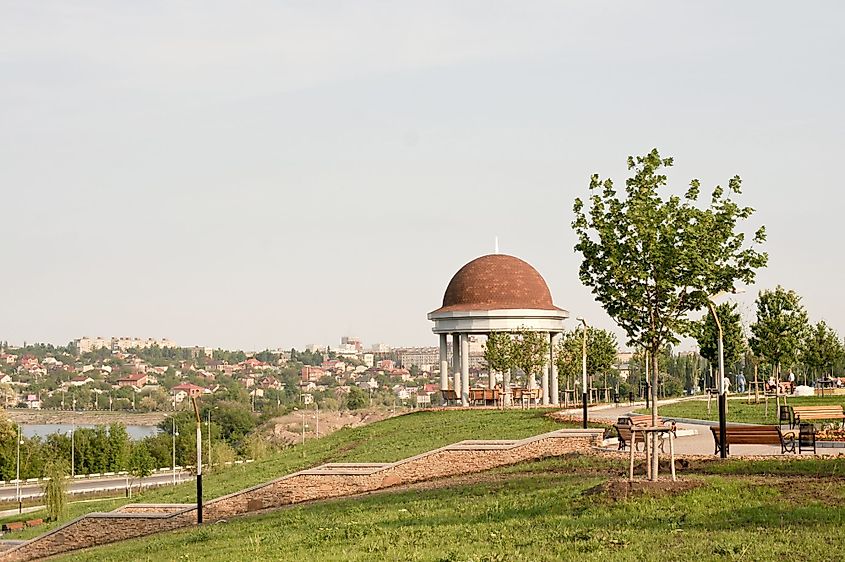
One of the greenest cities in Ukraine, Donetsk, contained 12,000 hectares worth of parkland and gardens in 1976, which increased to 25,900 hectares by 1988, while the green suburban belt had almost 72,000 hectares. There is the oldest Shcherbakov Park, the City Park of Culture and Recreation with Donbas Arena, track and field facilities, tennis courts, children’s train ride, the Musical Park overlooking the Kalmiius Reservoir, the Seredni Prudy park, and the Donetsk Botanical Garden of the National Academy of Sciences of Ukraine (1964), among others. The digitally-equipped Donetsk Planetarium offers life-like experiences with its three-dimensional images showing topography, geological parameters, and atmospheric characteristics of the planets in the Solar system. There are also viewings of various simulated space-bound flights.
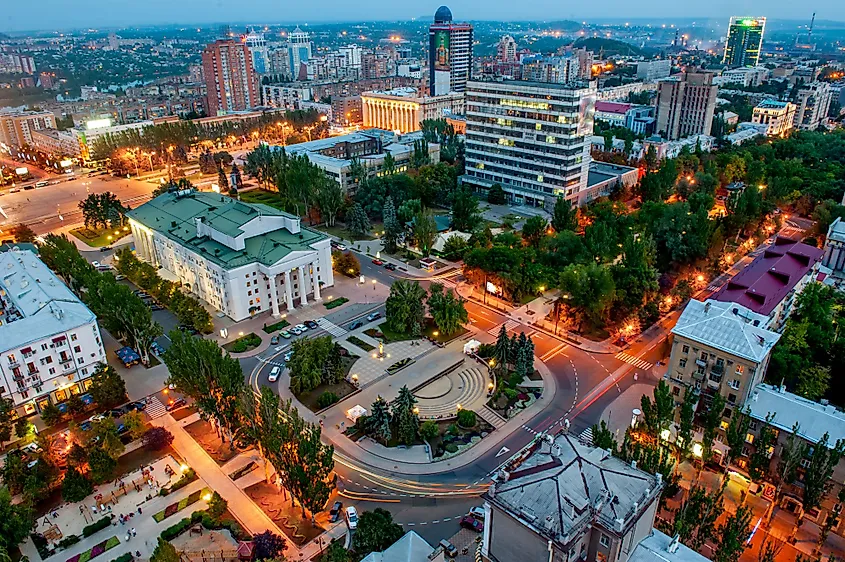
Architecturally formed in 1927-1967, Donetsk's central Lenin Square comprises a pedestrian zone and an open air space for public festivals and performances, while it's dominant building used to house the Ukrainian Ministry of Coal Industry. One of Donetsk's most beautiful streets, the Pushkin Boulevard with a centrally-located theater, is a famous gathering spot for poets, writers, and other creative minds. Littered with sculptures and flowerbeds, the boulevard's intersection with Gurov Avenue is a popular hangout spot for watching people stroll by from several restaurants. The end of the boulevard is occupied by the local artists selling paintings with urban landscapes and various souvenirs. The “Ukrainian steppe” is a park of sculptures containing Ukrainian- and German-created eleven works of Slavic mythology.
Historical Sights
The historical House of Hughes (1873), the Donetsk's founder's family house set at the southwest of Yuzovsky Iron and Steel Works, was rebuilt from a one-story to its former look in 1891. Although John Hughes died a few years earlier and his family returned to England, directors and managers of the metallurgical plant lived in the house. Damaged during the Second World War and used for various purposes until 1990, it is part of a private enterprise's territory today.
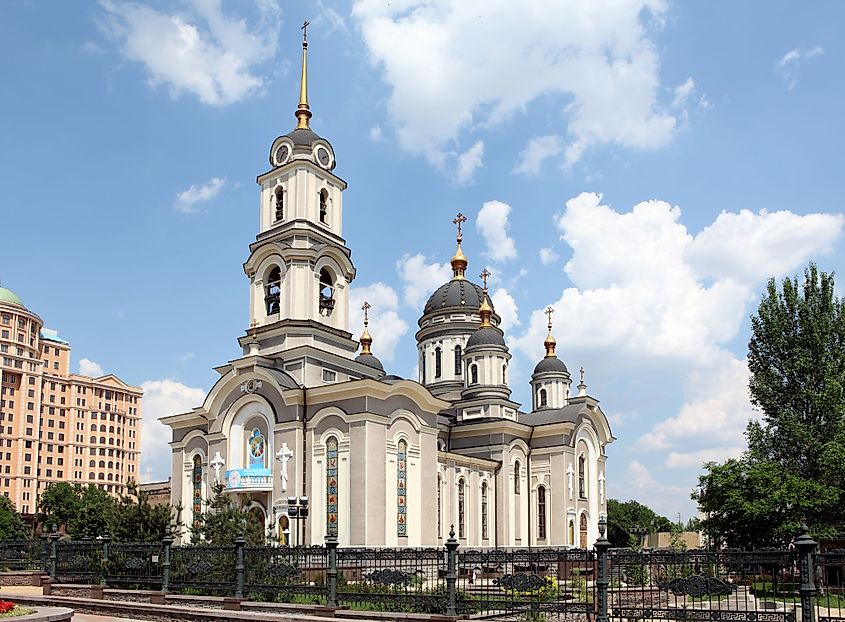
The first hotel opened in Donetsk, the “Great Britain” (1883), is a historic two-story building in the city's center serving its purpose to this day, and has hosted many famous Soviets of the era when it was called “October.” The original stone church, the Holy Transfiguration Cathedral, was built in 1883-1886, only to be destroyed during the Soviet campaign against religion in 1933. It was not until 1992 that the city made the namesake differently-styled new cathedral off-location, one of the leading Orthodox churches in Donetsk today. There are also over 250 monuments spread around the city.
Recent Events
Releasing simultaneous public video statements on Telegram on February 18, the leaders of both separatist republics notified of the immediate mobilization of all men and evacuation of women and children. Due to "Ukraine mounting concerted attacks and sending saboteurs," it left many wondering why Ukraine, which is desperately trying to avoid war, would suddenly mount the claimed significant operations. Already with the self-induced pretext to "intervene," Putin declared Russia's recognition of Donetsk and Luhansk oblasts independence on February 21, where he would send peacekeepers, making the city of Donetsk erupt in celebration.
While some believe that the war has been going on for almost eight years, Slavic people would say that “what was in the past were flowers” in the face of the attack on Ukraine by the Russian forces on February 24, 2022. Upon announcing a "special military operation to remove the Nazis from the Ukrainian government" three days later, Russian troops invaded Ukraine, brutally attacking all major cities through raids and bombings lasting to this day. Today, the Donetsk frontline is a scene, upsurge in shelling, too dangerous to remain on the grounds of. Simultaneously, the radio and television reports in the controlled regions portray a very different picture from the too-true war raging in the west.
